RANKS IN INDIAN NAVY - A Guide to a Indian Navy Ranks
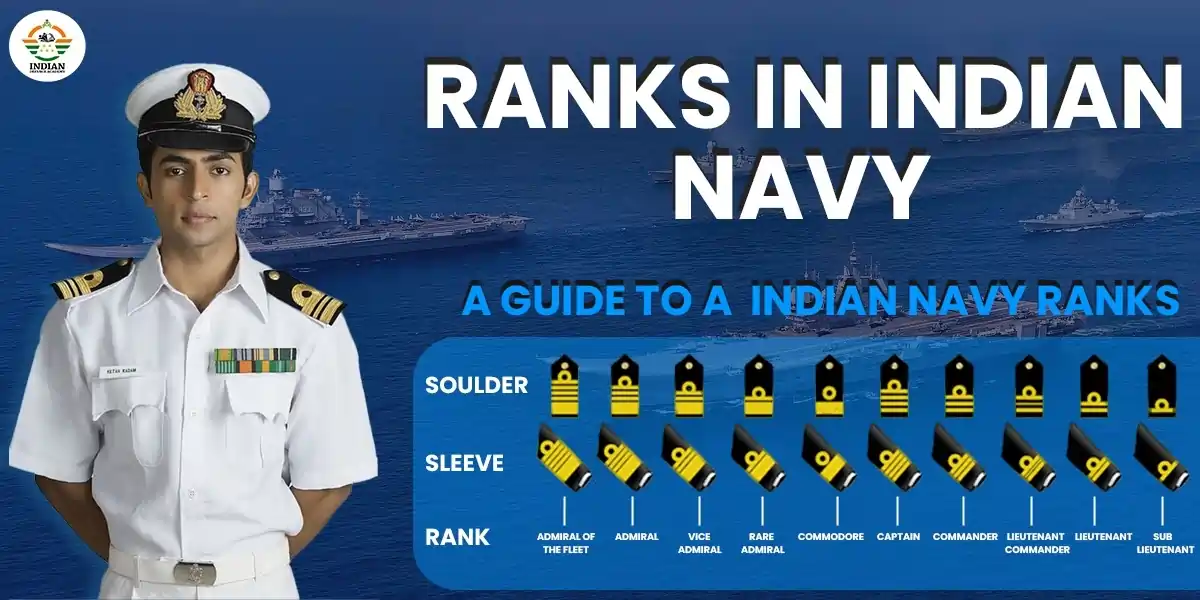
The Indian Navy is a vital component of India’s defence forces, responsible for safeguarding the nation’s maritime interests and ensuring security at sea. Like any disciplined military organization, the Indian Navy employs a structured system of ranks to maintain order, hierarchy, and efficient operation within its ranks. In this article, we will delve into the various ranks within the Indian Navy and understand the roles and responsibilities associated with each.
Commissioned Officers ( Ranks in Indian Navy )
- Admiral ( Ranks in Indian Navy )

In the Indian Navy, an Admiral is the highest attainable rank, and it represents the pinnacle of leadership and responsibility within the naval hierarchy. This four-star rank is held by the Chief of the Naval Staff, who is the principal military advisor to the President of India and the Ministry of Defence. The Admiral is responsible for setting strategic objectives, shaping naval policy, and ensuring the operational readiness of the Indian Navy. They play a vital role in the nation’s maritime defence, overseeing a wide range of activities from fleet management to international collaborations, making them a key figure in maintaining the security and sovereignty of India’s maritime interests.
- Vice Admiral ( Ranks in Indian Navy )

In the Indian Navy, the rank of Vice Admiral is one of the highest attainable positions, second only to the Admiral, who serves as the Chief of the Naval Staff. Vice Admirals hold crucial leadership roles, often overseeing vital commands and strategic operations within the Navy. They are responsible for directing and managing large fleets and operations at sea, ensuring the security and readiness of India’s maritime forces. Their extensive experience, in-depth knowledge, and leadership skills make them pivotal in shaping the Indian Navy’s strategies and operational effectiveness on the high seas.
- Rear Admiral ( Ranks in Indian Navy )

A Rear Admiral in the Indian Navy holds a senior leadership position, responsible for overseeing the operation of naval fleets and various naval areas and commands. This two-star rank is pivotal in ensuring effective naval operations and the strategic readiness of the Indian Navy. Rear Admirals play a crucial role in the decision-making process, contributing to the Navy’s overall mission to protect India’s maritime interests and security. They are seasoned officers with extensive experience and expertise, contributing significantly to the strength and capability of the Indian Navy.
- Commodore ( Ranks in Indian Navy )
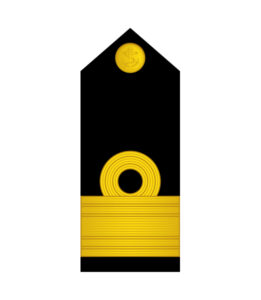
In the Indian Navy, a Commodore holds a senior commissioned officer rank responsible for commanding naval bases, flotillas, or squadrons. This rank represents a significant step in a naval officer’s career, where they are entrusted with operational and administrative leadership of multiple ships or units. Commodores play a vital role in coordinating and overseeing various naval activities, ensuring readiness, and contributing to the overall effectiveness of the Navy. They are typically experienced and seasoned officers who have demonstrated leadership, expertise, and a deep understanding of naval operations.
- Captain ( Ranks in Indian Navy )
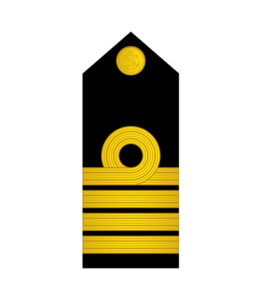
In the Indian Navy, a Captain is a commissioned officer who holds a vital leadership role as the commanding officer of larger naval vessels such as warships, frigates, and destroyers. The Captain is responsible for the overall operation and safety of the ship, as well as the well-being and discipline of the crew. This rank embodies a wealth of experience, knowledge, and leadership, essential for executing complex maritime missions and ensuring the Navy’s readiness. Captains in the Indian Navy are not only skilled mariners but also adept decision-makers, managing their ships with the highest level of professionalism and dedication to the nation’s maritime security.
- Commander ( Ranks in Indian Navy )
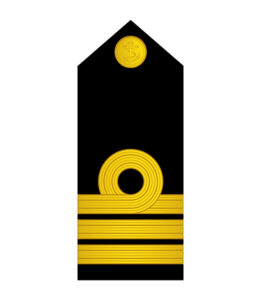
In the Indian Navy, a Commander is a crucial rank among the commissioned officers. Holding the rank of Commander signifies a significant level of responsibility and leadership. Commanders are typically entrusted with the management of smaller naval vessels and may also serve in various staff roles both afloat and ashore. They play an essential role in ensuring the effective operation and readiness of their assigned units, contributing to the overall maritime security and defence of India. Commanders have a pivotal role in the Navy’s command structure, bridging the gap between junior officers and higher-ranking officials, and are often on a path toward more senior leadership roles within the organization.
- Lieutenant Commander ( Ranks in Indian Navy )

In the Indian Navy, a Lieutenant Commander holds the rank of a senior commissioned officer. They typically serve as watchkeeping officers on naval vessels, taking on significant responsibilities in terms of navigation and command, especially on smaller ships. In addition to their duties at sea, Lieutenant Commanders may also serve in staff positions, providing valuable expertise and leadership in various administrative and operational roles. This rank represents a critical point in an officer’s career, as it marks the transition from junior to mid-level officer roles, with opportunities for further advancement and specialization within the Indian Navy.
- Lieutenant ( Ranks in Indian Navy )

In the Indian Navy, a Lieutenant is a commissioned officer rank that holds significant responsibilities. Lieutenants serve as versatile officers who play a crucial role in various operational and staff appointments, both afloat and ashore. Onboard ships, they often take on roles such as watchkeeping officers, responsible for navigation, safety, and operations. Their training, leadership skills, and knowledge are essential to the Navy’s day-to-day operations, ensuring the safety and effectiveness of naval activities. As they advance in their careers, Lieutenants may take on more specialized roles and responsibilities, making them a vital part of the Indian Navy’s command structure.
- Sub-Lieutenant ( Ranks in Indian Navy )

In the Indian Navy, a Sub-Lieutenant is a junior officer rank, representing the initial step on the commissioned officer career ladder. Sub-Lieutenants are responsible for various watchkeeping duties on naval vessels, ensuring the safety and effective operation of the ship. They may also perform roles related to training and education. This rank marks the beginning of a promising career in the Indian Navy, and Sub-Lieutenants can advance to higher positions through hard work, dedication, and the successful completion of required training and qualifications.
Non-Commissioned Officers ( Ranks in Indian Navy )
- Master Chief Petty Officer ( Ranks in Indian Navy )
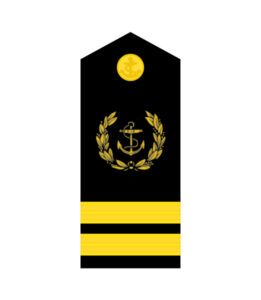
The Master Chief Petty Officer in the Indian Navy holds a position of significant authority and responsibility within the enlisted ranks. This senior non-commissioned officer serves as a bridge between the commissioned officers and other enlisted personnel, playing a crucial role in maintaining discipline, order, and leadership. Master Chief Petty Officers are typically highly experienced, with extensive knowledge of naval procedures and traditions. They provide guidance and mentorship to junior enlisted personnel, ensuring the effective functioning of the Navy. Their extensive expertise and leadership make them key figures in fostering a culture of professionalism and excellence within the Indian Navy.
- Fleet Chief Petty Officer ( Ranks in Indian Navy )
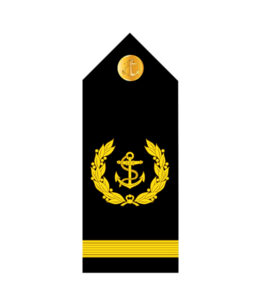
The Fleet Chief Petty Officer in the Indian Navy holds a significant non-commissioned officer rank, responsible for providing leadership and guidance within their respective fleet. They play a pivotal role in maintaining discipline, training, and operational readiness among the enlisted personnel under their command. Fleet Chief Petty Officers are experienced and respected individuals who often serve as mentors, ensuring that the highest standards of professionalism and performance are upheld throughout the fleet. Their expertise and dedication are crucial in contributing to the overall effectiveness of the Indian Navy’s operations.
- Chief Petty Officer ( Ranks in Indian Navy )
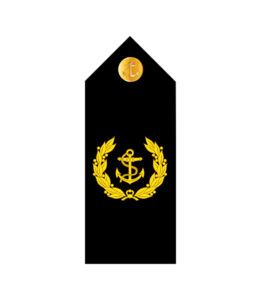
A Chief Petty Officer (CPO) in the Indian Navy is a senior non-commissioned officer with significant experience and expertise in their specific field. CPOs play pivotal roles in maintaining discipline, mentoring junior personnel, and ensuring the effective operation of naval units. They are responsible for supervising and training lower-ranking sailors, as well as assisting officers in various aspects of their duties. With their wealth of knowledge and leadership skills, Chief Petty Officers are vital assets in the Indian Navy’s mission to protect the nation’s maritime interests and maintain a highly skilled and motivated naval force.
- Petty Officer ( Ranks in Indian Navy )

A Petty Officer in the Indian Navy holds a crucial position within the non-commissioned officer (NCO) ranks. This rank represents a level of experience, responsibility, and leadership in the Navy. Petty Officers are responsible for supervising and mentoring junior enlisted personnel, ensuring that daily operations run smoothly, and supporting the commissioned officers in various roles. They possess specialized skills and knowledge in their specific fields, be it engineering, navigation, communications, or other essential areas. Petty Officers play a vital role in the Navy’s overall efficiency and effectiveness, contributing significantly to the Navy’s mission of safeguarding India’s maritime interests.
- Leading Seaman ( Ranks in Indian Navy )

A Leading Seaman in the Indian Navy holds a significant position within the non-commissioned officer ranks. This rank denotes a seasoned and experienced sailor who has demonstrated leadership and expertise in various maritime duties. Leading Seamen are responsible for supervising and leading teams of sailors, ensuring the smooth operation and maintenance of naval vessels, and assisting officers in critical roles. Their experience and dedication make them valuable assets in the Indian Navy, contributing to the overall efficiency and success of naval operations.
- Seaman ( Ranks in Indian Navy )
A Seaman in the Indian Navy serves as an entry-level enlisted personnel. This rank typically represents the starting point for a sailor’s naval career, and individuals in this role undergo basic training to learn fundamental skills in seamanship, navigation, and shipboard operations. As they gain experience and complete additional training, they have the opportunity to advance through the ranks, taking on more significant responsibilities and specializing in various areas within the Navy. Seamen play an essential role in supporting the Navy’s day-to-day operations and are the backbone of the service, contributing to the overall strength and efficiency of India’s maritime defence.
Also check the Indian air force ranks blog.

